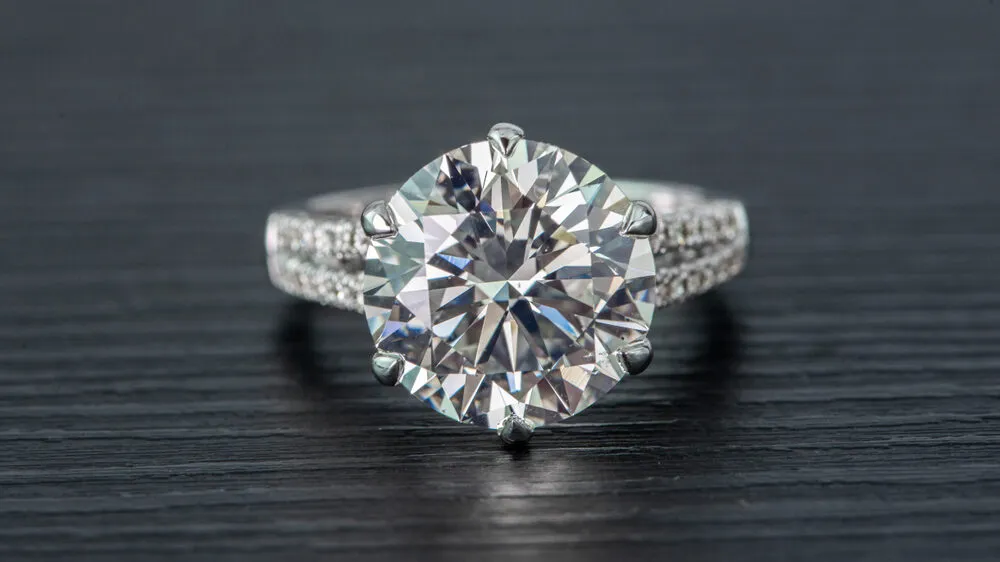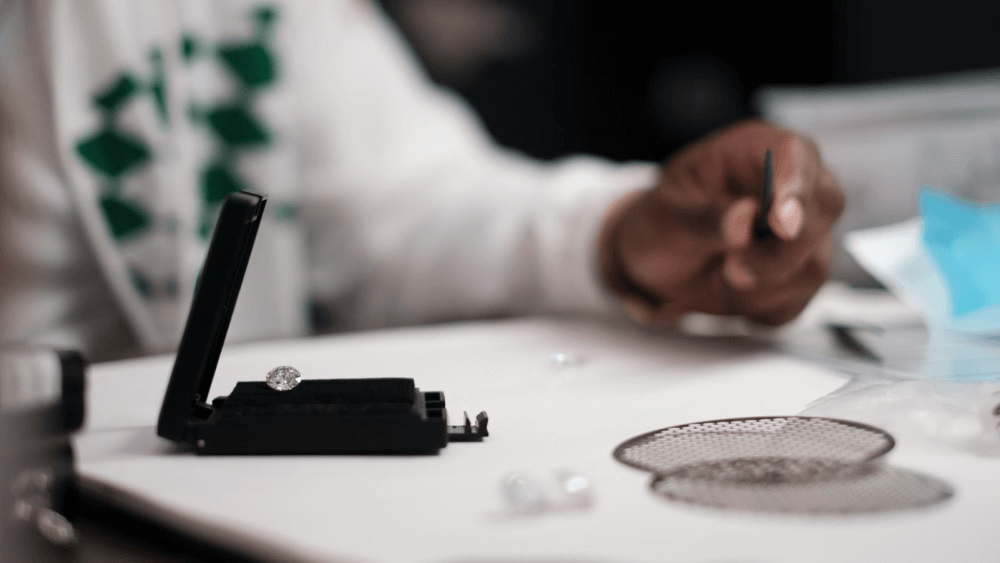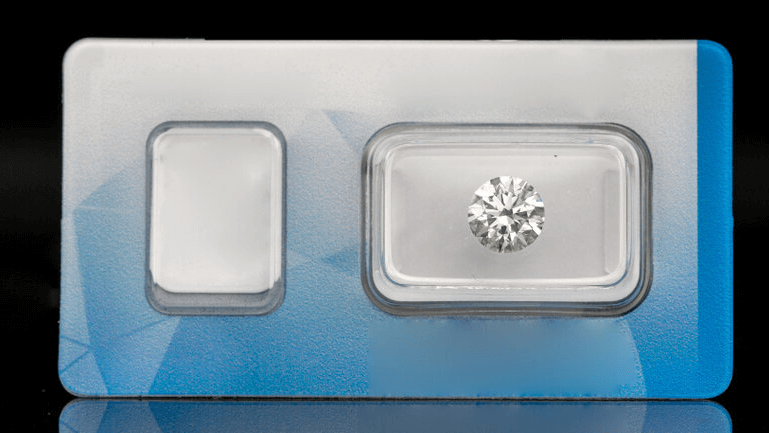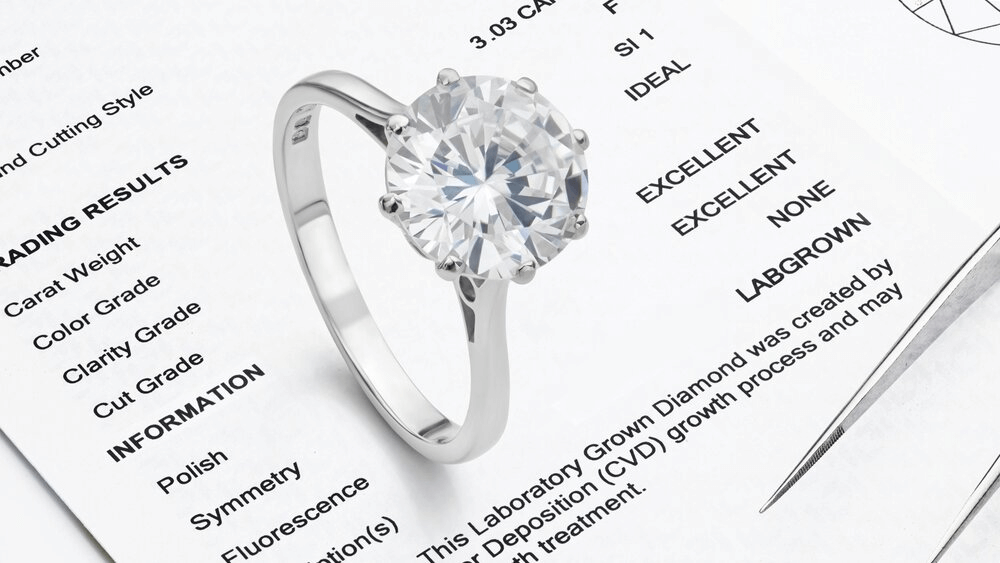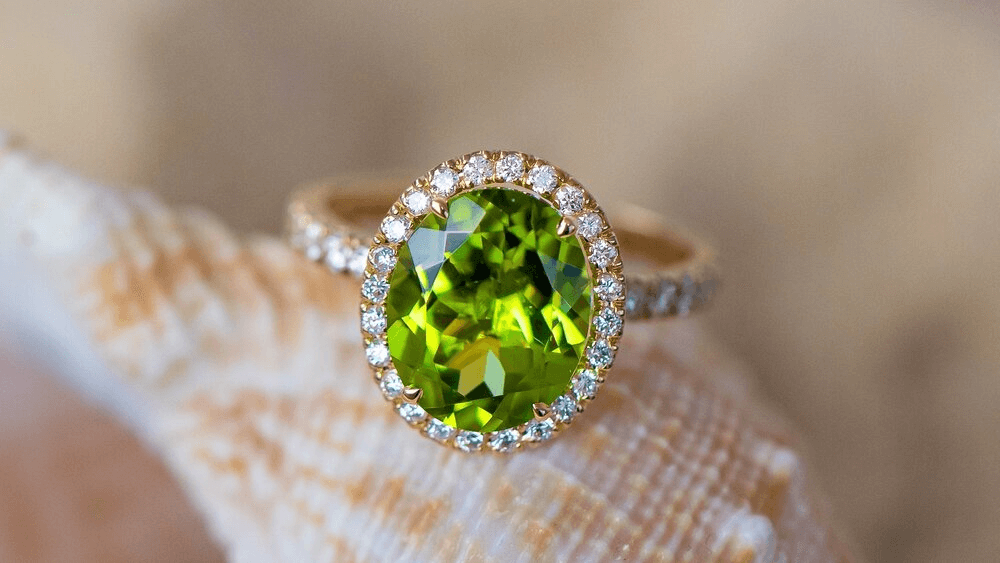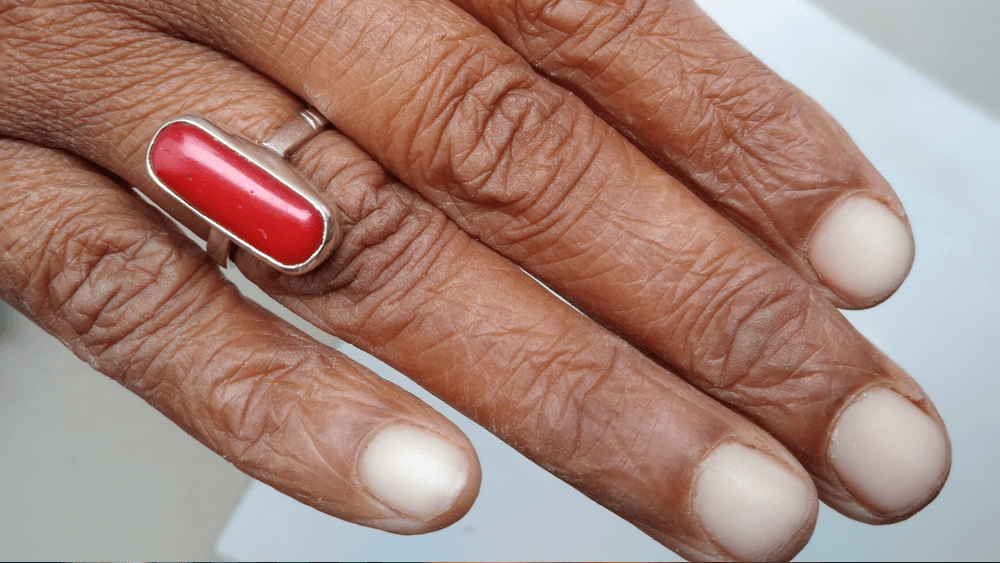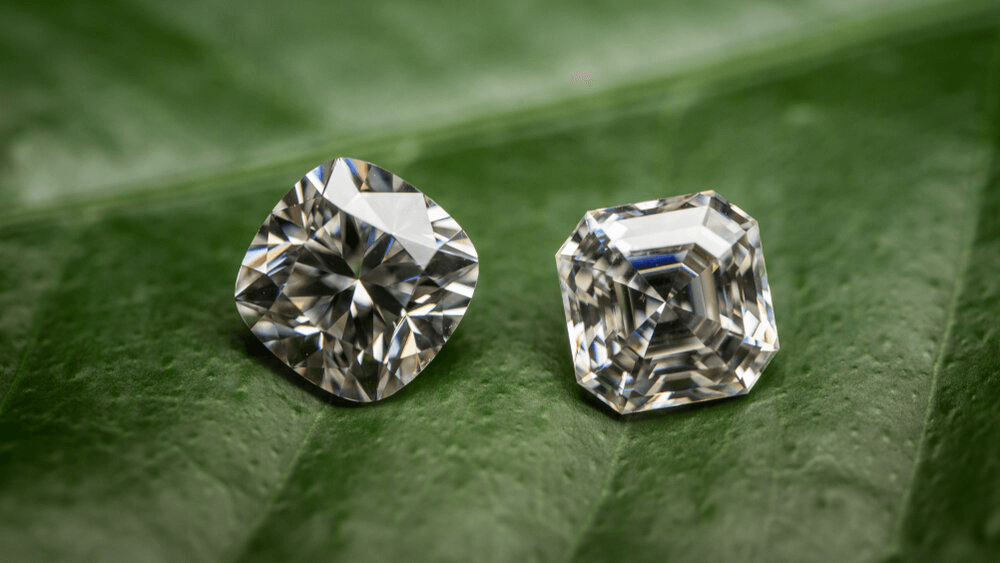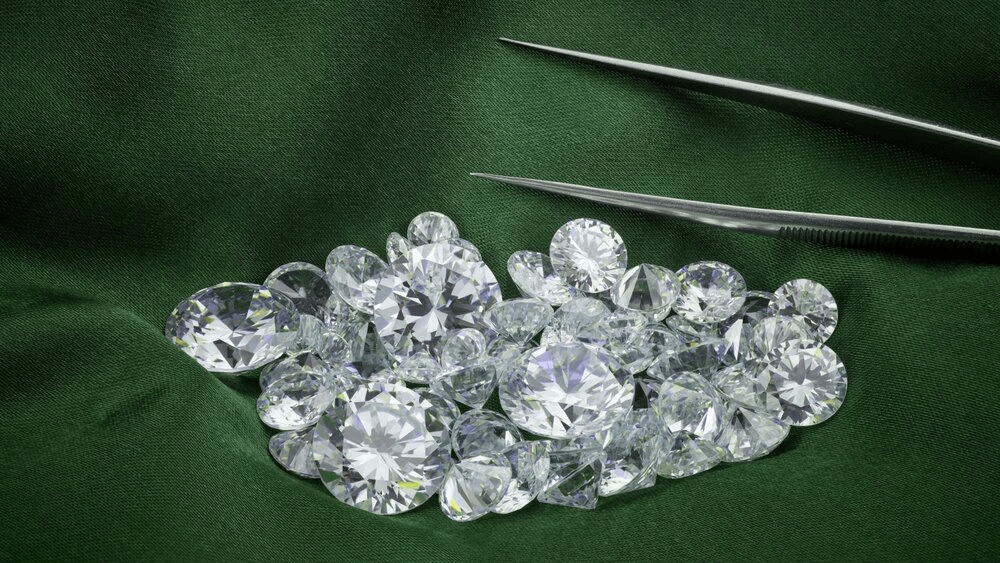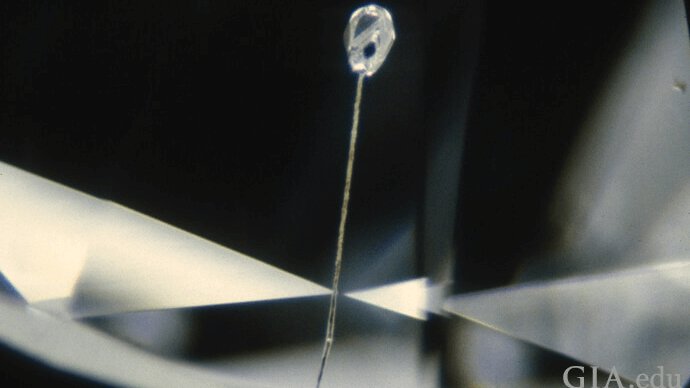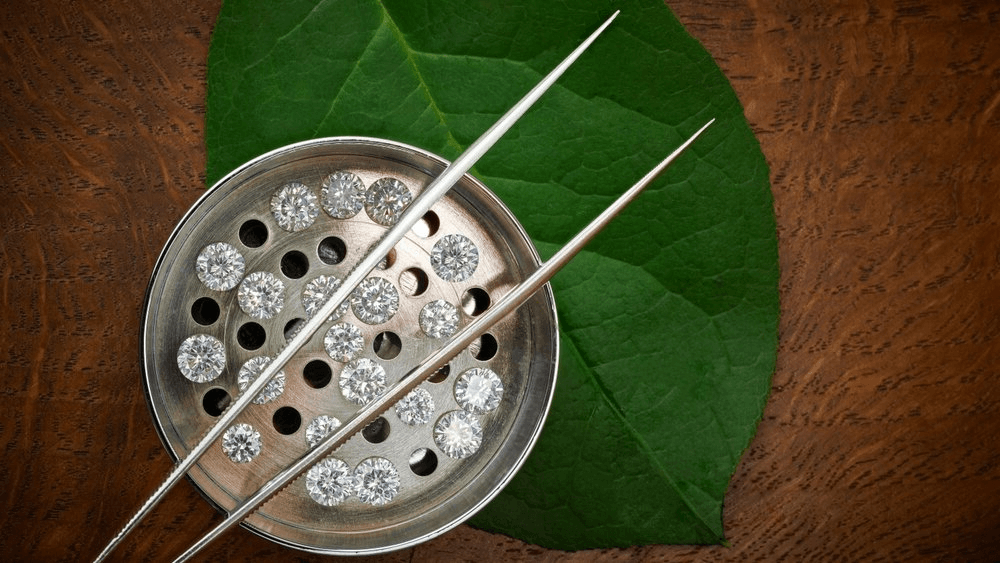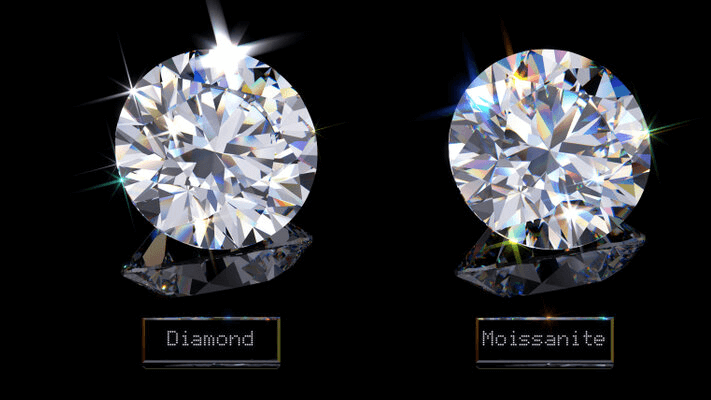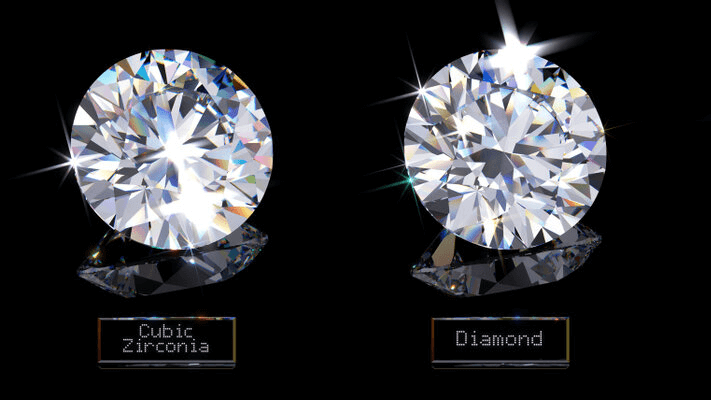Lab Grown Diamonds vs Moissanite: The Unbelievable Truth!

By Gary A.

Edited by Olivia H.
Published Aug 30, 2024
Edited on Dec 18, 2024
Moissanite is a big name in the jewelry industry, but is it a passing fling or a romantic alternative to lab grown diamond? We unpack everything about moissanite vs lab grown in this article.

Navigate this guide:
- 7 Quick Tips for Choosing Between Lab Grown and Moissanite for Your Engagement Ring
- Introduction to Lab Grown and Moissanite
- Lab Grown Diamonds: A New Era
- Moissanite: The Meteoric Marvel
- Comparative Analysis: Lab Grown vs Moissanite
- Our Expert Take
- 8 Frequently Asked Questions About Lab Grown Diamonds vs Moissanite
7 Quick Tips for Choosing Between Lab Grown and Moissanite for Your Engagement Ring
When embarking on the journey to find the perfect diamond engagement ring, understanding the nuances between lab-grown diamonds and moissanite is crucial. Both present appealing benefits, but being armed with the right knowledge will ensure your choice resonates with your personal values and desires. Here are practical tips to guide you through examining their 4Cs and making an informed decision.
- Tip 1: Understanding the “Real” Factor
- Lab Grown Diamonds: Remember, these are real diamonds, sharing the same physical and chemical properties as their mined counterparts. Their creation in a lab setting doesn’t diminish their authenticity or brilliance.
- Moissanite: Acknowledge that while moissanite is a beautiful stone in its own right, it is not a diamond. Its unique sparkle and composition make it an attractive, affordable alternative, but it’s important to recognize the distinction.
- Tip 2: Assessing the Brilliance and Fire
- Lab Grown Diamonds: Pay attention to the cut, as it’s paramount in determining the stone’s brilliance. A well-cut lab-grown diamond will have the stunning sparkle associated with high-quality natural diamonds.
- Moissanite: Observe the stone’s fire or dispersion. Moissanite is known for its colorful, fiery sparkle. If you prefer a more traditional diamond appearance, this characteristic might be a deciding factor.
- Tip 3: Considering Color and Clarity
- Lab Grown Diamonds: Just like mined diamonds, lab-grown versions can range in color and clarity. Decide what’s acceptable for you, balancing imperfections with budget considerations.
- Moissanite: Typically, moissanite is near-colorless, but some may exhibit slight yellow or green tints under certain lighting. Ensure you view the stone under different lights to gauge its true color.
- Tip 4: Evaluating the Size and Price
- Lab Grown Diamonds: Understand that larger lab-grown diamonds might still carry a significant price tag. Determine your priorities between size and quality within your budget.
- Moissanite: Moissanite offers more size for the same price compared to both lab-grown and mined diamonds. If size is a significant factor for you, moissanite might offer the visual impact you desire at a more accessible price point.
- Tip 5: Reflecting on Ethical and Environmental Values
- Both lab-grown diamonds and moissanite offer ethical advantages over mined diamonds. Consider which option aligns better with your values, especially if sustainability and ethical sourcing are important to you.
- Tip 6: Longevity and Daily Wear
- Lab Grown Diamonds: With a hardness rating of 10, lab-grown diamonds are suited for a lifetime of wear, making them an excellent choice for engagement rings.
- Moissanite: Although slightly softer, moissanite is still a durable option for daily wear. Its unique sparkle will endure, but being mindful of its slightly lower hardness can influence care and maintenance choices.
- Tip 7: Personal Preference and Style
- Ultimately, the choice between lab-grown diamonds and moissanite should reflect your personal style and preference. Consider which stone speaks to you visually and emotionally, as this piece symbolizes a significant life milestone.
Now that you’ve got these practical tips, use Jeweler AI below to find the perfect engagement ring that suits your style and budget.
Introduction to Lab Grown and Moissanite
Choosing the perfect diamond has become a lot more interesting—and a bit more complicated. With lab-grown diamonds gaining traction and moissanite emerging as a popular alternative, the landscape of options is expanding beyond the traditional. Each choice comes with its own appeal, but understanding how they truly measure up—both against each other and natural diamonds—is crucial.
This article uncovers the real differences between lab-grown diamonds and moissanite, cutting through the noise to reveal what really matters. Whether you’re intrigued by the ethical aspects of lab-grown options or wondering if moissanite’s sparkle can match up, this guide will provide the clarity you need.
By the end, you’ll have a stronger grasp of which option fits best with your style, values, and budget. Ready to uncover the truth? Let’s get started.
Lab Grown Diamonds: A New Era
Remember when “lab grown” meant subpar? Well, those days are long gone. Lab grown diamonds are shaking up the jewelry scene, and for good reason.
The Science Behind Creation
It’s not magic, but it’s pretty close. Lab grown diamonds are created using two main methods: High Pressure-High Temperature (HPHT) and Chemical Vapor Deposition (CVD). Both processes essentially recreate the conditions under which natural diamonds form, but in a controlled environment. The result? A diamond that’s chemically, physically, and optically identical to its mined counterpart.
These aren’t knock-offs or imitations – they’re the real deal, just with a different origin story. Think of it like ice from your freezer versus ice from a glacier. Different source, same H2O.
Of course, plenty of people – probably even the overwhelming majority of us – prefer the symbolism and history of a natural diamond, but there are plenty of instances where a lab grown diamond can be the right choice.
Ethical and Sustainable Choice
Here’s where lab grown diamonds really shine. No pun intended. They sidestep the ethical concerns associated with diamond mining, from worker exploitation to environmental damage. Plus, their production has a significantly smaller carbon footprint.
It’s like having your cake and eating it too – you get the brilliance of a diamond without the weight of ethical concerns. For the eco-conscious jewelry lover, lab grown diamonds are a guilt-free indulgence.
Moissanite: The Meteoric Marvel
Now, let’s shift our gaze to moissanite. This gem has a story that’s quite literally out of this world…
From Cosmic Discovery to Lab Creation
Moissanite was first discovered in a meteor crater. Yes, you read that right. In 1893, Henri Moissan found what he thought were diamonds in Arizona’s Meteor Crater. Turns out, he’d stumbled upon something even rarer – silicon carbide crystals that would later bear his name.
Natural moissanite is incredibly scarce, so the gems we see today are lab-created. But unlike lab grown diamonds, they’re not trying to replicate something else – they’re their own unique gem.
The Unique Traits of Moissanite
Moissanite has some impressive qualities. It’s harder than most gemstones (though not as hard as diamond) and has a refractive index that gives it serious sparkle. In fact, it’s got more fire and brilliance than a diamond, which can be a pro or a con depending on your taste.
But here’s the catch – it’s not a diamond. While it can look similar to the untrained eye, there are differences in color, clarity, and overall appearance that gem experts can spot.
Comparative Analysis: Lab Grown vs Moissanite
Now for the showdown. How do these gems stack up against each other?
Visual Appeal and Physical Properties
Lab grown diamonds and moissanite might look similar at first glance, but they’re quite different beasts. Lab diamonds have the same hardness, brilliance, and fire as mined diamonds. Moissanite, while brilliant, has more “fire” (that rainbow effect when light hits the stone), which some love and others find a bit too flashy.
In terms of durability, both are tough cookies. But diamonds (lab grown or natural) take the cake with a perfect 10 on the Mohs scale, while moissanite comes in at 9.25. It’s like comparing a tank to an armored car – both are tough, but one’s clearly tougher.
The Financial Aspect: Cost Comparison
Here’s where things get interesting. Both lab grown diamonds and moissanite are more affordable than mined diamonds, but moissanite takes the lead in the budget-friendly race.
However, it’s crucial to remember that you’re not comparing apples to apples here. A lab grown diamond is still a diamond, with all the value and prestige that comes with it. Moissanite, while beautiful, is a different gem altogether. It’s like comparing the cost of a designer original to an inspired-by piece – both might look good, but they’re in different leagues.
Ethical and Environmental Impacts
Both lab grown diamonds and moissanite score points for ethical production, although it’s not always as simple as ‘man-made > natural’ when it comes to ethical and environmental concerns. On the environmental front, both have a smaller footprint than mined diamonds, but lab grown diamonds edge ahead as they’re replicating a natural process more closely.
Value and Durability Considerations
When it comes to long-term value, lab grown diamonds have a clear advantage. They’re real diamonds, after all, and while they’re currently less expensive than mined diamonds, they retain the intrinsic value of diamond. Moissanite, while durable, doesn’t carry the same long-term value proposition.
Think of it like investing in real estate versus a really nice rental. Both give you a place to live, but only one is likely to appreciate over time.
Navigating Market Trends
The jewelry market is ever-evolving, and both lab grown diamonds and moissanite are riding the wave of change. Lab grown diamonds are seeing increasing acceptance in the fine jewelry market, with more renowned brands incorporating them into their collections.
Moissanite, while popular, tends to occupy a different niche. It’s often chosen as a diamond alternative rather than as a gemstone in its own right. This distinction could impact future market trends and value.
Our Expert Take
In the lab grown vs moissanite face-off, both gems have their merits. Moissanite offers impressive sparkle at a wallet-friendly price, while lab grown diamonds provide all the benefits of a diamond without the ethical concerns.
Ultimately, the choice between lab grown diamonds and moissanite comes down to personal preference, budget, and what you value most in a gemstone. But if you’re after the real deal – a true diamond with ethical credentials – lab grown diamonds are the clear winner. They offer the timeless appeal and value of diamonds, coupled with modern, ethical production.
Moissanite can look out of place, particularly if you opt for a carat weight that would be way beyond your budget if you were purchasing a real diamond. We can’t all walk around with rocks the size of Beyoncé’s, and that’s why moissanite can seem a little…well…off.
8 Frequently Asked Questions About Lab Grown Diamonds vs Moissanite
- Q: What is the main difference between lab-grown diamonds and moissanite?
- A: Lab-grown diamonds are real diamonds created in a lab, sharing the same physical and chemical properties as natural diamonds. Moissanite is a different gemstone made of silicon carbide, known for its brilliant fire and slightly lower hardness compared to diamonds.
- Q: Can moissanite pass as a real diamond?
- A: While moissanite is very sparkly and visually appealing, it has a distinct rainbow-like brilliance that differs from a diamond’s white light reflection. Expert jewelers and gemologists can easily distinguish between the two.
- Q: Are lab-grown diamonds as durable as natural diamonds?
- A: Yes, lab-grown diamonds have the same hardness rating of 10 on the Mohs scale, making them just as durable and suitable for everyday wear as natural diamonds.
- Q: Do lab-grown diamonds hold their value over time?
- A: Lab-grown diamonds tend to be less expensive than natural diamonds and may not retain their initial value as well due to the evolving technology and market availability. However, they remain valuable and cherished as precious gemstones.
- Q: Is moissanite considered a fake diamond?
- A: Moissanite is not a fake diamond but a distinct gemstone with its own unique properties. It’s a popular diamond alternative due to its affordability and brilliant sparkle but should not be misrepresented as a diamond.
- Q: How can I tell if a diamond is lab-grown or mined?
- A: Lab-grown diamonds often come with certification indicating their origin. Additionally, they may have inscriptions on the girdle that identify them as lab-grown, visible under magnification.
- Q: Why choose moissanite over a lab-grown diamond?
- A: Moissanite is chosen for its affordability, brilliant fire, and ethical production. It’s an excellent choice for those prioritizing budget and seeking a durable, sparkling gemstone for their engagement ring.
- Q: Are lab-grown diamonds and moissanite eco-friendly?
- A: Both lab-grown diamonds and moissanite have a smaller environmental footprint compared to mined diamonds, making them appealing choices for eco-conscious consumers.
Transform your ring journey with Jeweler AI. Explore Lab Grown vs Moissanite with ease.
FOLLOW-UP GUIDE SERIES

